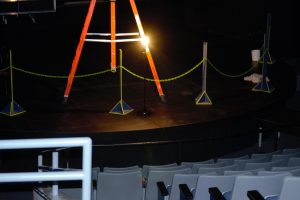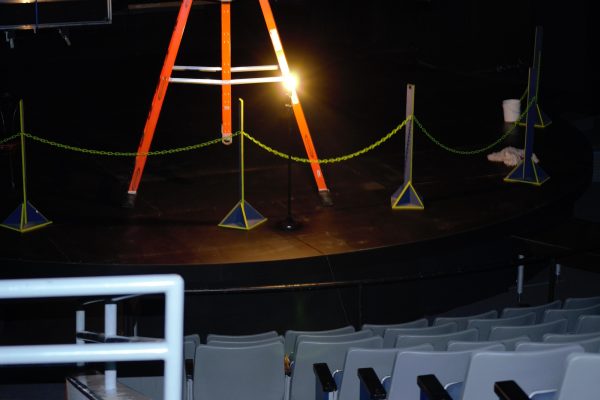You have never seen ‘Pulp Fiction’?
SPU community creates new unique definition of ‘classics’ through emotional connections
February 24, 2023

There are few things more embarrassing to any student interested in film than admitting to all the movies they have never seen. With hundreds of years of rich history, it is easy to be intimidated by the fact that there will never be enough time to watch or read everything.
A person’s definition of classics has little to do with widespread appeal and everything to do with emotional association. How many people have made their way through the entirety of Rolling Stone’s “500 Greatest Albums of All Time,” watched through IMDB’s “Top 250 Films” or have made a considerable dent in Penguins Books’ “Must-Read Classics”? Likely, not many, but that does not mean their lives are void of classics.
Some may not have the desire or time to sit through “classic” movies such as “Pulp Fiction” or “Citizen Kane,” but they may be able to quote the entirety of their favorite movie.
The word classic refers to a piece of work that is highly regarded and established in value. What the definition does not include is any indication that the value of a text is dependent on a person’s personal interpretations. So why have people become so obsessed with socially-defined classics?
The simplest answer is that instinctively people desire to fit in. Being in “the know” with some of the world’s most beloved or referenced works of art is a simple common ground and allows people to connect with others easily. A more complex response can show a direct link between western popular media and the classist intellectualism historically associated with it, a practice that certainly still lingers in today’s society.
Seattle Pacific University adjunct professor Kristen Sundberg Lunstrum finds that while the “classics” still exist, that narrative may be changing.
“The canon as it has historically been defined is exclusionary. I think that’s changing, though. High school and college literature classes are doing a better job now than in the past of exposing readers to a breadth of literary models and a range of authors from different identities, backgrounds and voices, which is exciting for anyone who loves literature,” Sundberg Lunstrum said.
After reframing the collective understanding of what classics truly are, people can begin to appreciate the uniqueness of unsung work they otherwise would have missed out on.
First year early childhood education and honors major Hannah Venable defines the classics in terms of generational admiration.
“It’s like, these are the shows I connected with as a kid, so they will be classics in the future. Even if everyone else thinks, ‘eh, you know, it wasn’t that great,’ for that group they will remain special,” Venable said.
In terms of movies, many other SPU students also linked classics back to their childhood favorites, such as first year nursing major, Lia Werner. Her definition of a classic can be summed up in one word: Disney.
Disney’s domination in students’ minds did not stop there. Many students believe that the large franchises owned by Disney such as Marvel will one day be considered classics. SPU students’ definition of the “classics” is driven by comfort and nostalgic feelings.
Third year nursing student Elizabeth Cortez agrees that the Marvel franchise will one day be considered a classic, but she also believes that other Disney movies and franchises are deserving of that recognition.
“I know it falls under Disney, but when I hear ‘classics,’ I just specifically think of ‘Star Wars.’ I also think that ‘Monsters University’ should be considered because many of us watched it growing up thinking, ‘This is college, I mean it’s not really accurate, but it can be.’” Cortez said.
Sundberg Lunstrum, as a short fiction writer and scholar, explained what the word ‘classic’ means in the world of literature. As an appreciator of both new and older texts, Lunstrum’s definition of classic literature expands past the bounds of what many may assume,
“At the top of my must-read list, for instance, is Austen’s ‘Pride & Prejudice’, Brönte’s ‘Jane Eyre’, Fitzgerald’s ‘The Great Gatsby’ and Cather’s ‘My Ántonia.’ I could go on and on here because there are so many fantastic reads from the past,” Sunberg Lunstrum said. “However, there are also newer ‘classics’ like Atwood’s ‘The Handmaid’s Tale’ and even newer books like Marilynne Robinson’s ‘Housekeeping’ and Sandra Cisneros’s ‘The House on Mango Street.’”
In literature, movies and music alike, it is hard to predict what people will one day look back on as the classics. Knowing that people often chose to cling to the things that strike them emotionally, it is safe to suggest that many future classics will come from the pieces of today’s media that have already made deep connections with people.
Classics can be an important part of passing culture on to newer generations, and while most of the time they are given their title for a reason, they may often be given too much value concerning their societal rank. In doing so, people have greatly limited their horizons.
By excluding themselves from experiencing the great range of vibrant culture the world has to offer, they miss out on one of the most important aspects of art: personal connection and engagement with it.
“Too often what a person reads is used as a marker of status or smarts,” Sundberg Lunstrum said. “Wouldn’t it be great if more people just read because they loved reading?”

























































































